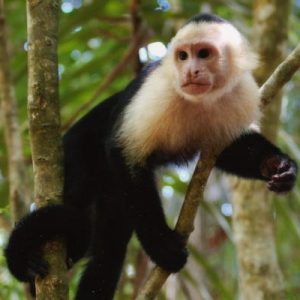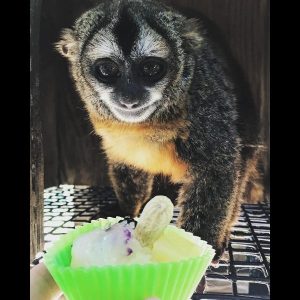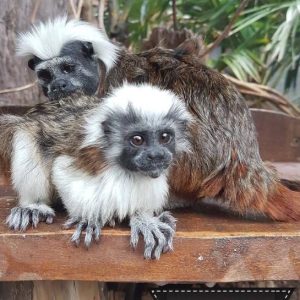Monkeys
Diverse World of Monkeys: An Exploration of Captivating Species
Monkeys, with their playful antics and diverse adaptations, form an intriguing and varied group within the animal kingdom. From the agile Capuchin Monkeys to the endearing Marmoset Monkeys and the acrobatic Spider Monkeys, each species contributes to the rich tapestry of primate life. In this exploration, we delve into the captivating world of monkeys, shining a spotlight on distinct species such as Capuchins, Marmosets, Owl Monkeys, Ringtail Lemurs, Squirrel Monkeys, Tamarins, and Spider Monkeys.
1. Capuchin Monkeys: Nimble Acrobats with Intelligence
Meet the Capuchins: Masters of Tool Use and Problem-Solving
Capuchin Monkeys, known for their charming appearance and expressive faces, are hailed as intelligent and resourceful primates. With their distinct cap-like markings and prehensile tails, Capuchins showcase remarkable agility. In the wild, they demonstrate tool use, employing sticks and stones to extract insects or crack open nuts. Renowned for their problem-solving abilities, Capuchins captivate researchers and enthusiasts alike with their clever maneuvers.
2. Marmoset Monkeys: Tiny Marvels with a Big Presence
Marmosets: Miniature Monkeys Packed with Personality
Marmoset Monkeys, characterized by their diminutive size and tufted ears, are miniature marvels that pack a punch of personality. Native to South America, these social creatures exhibit cooperative behaviors and live in tight-knit family groups. Marmosets are arboreal, using their sharp claws to navigate treetops, and their specialized teeth allow them to consume gum from trees as a significant part of their diet.
3. Owl Monkeys: Nocturnal Wonders with Big Eyes
Owl Monkeys: The Nocturnal Lords of the Night
Owl Monkeys, named for their large, round eyes resembling those of owls, are nocturnal wonders. Native to Central and South America, they possess adaptations for a nighttime lifestyle, such as keen night vision. Owl Monkeys form monogamous pairs and exhibit strong family bonds. Their distinctive appearance and adaptations make them a fascinating subject of study for primatologists.
4. Ringtail Lemurs: Madagascar’s Iconic Primates
Ringtail Lemurs: Madagascar’s Playful and Social Primates
While commonly referred to as lemurs, Ringtail Lemurs are indeed primates. Native to Madagascar, these iconic creatures are known for their vividly ringed tails and playful nature. Ringtail Lemurs are highly social, living in groups called troops. With expressive faces and distinctive vocalizations, they communicate within the troop and establish social bonds.
5. Squirrel Monkeys: Agile Aerial Acrobats
Squirrel Monkeys: Masters of Treetop Navigation
Squirrel Monkeys, with their vibrant fur and small size, are agile inhabitants of the rainforests of Central and South America. Renowned for their swift movements and acrobatic prowess, Squirrel Monkeys navigate the treetops with ease. They live in large groups, exhibiting complex social structures and communication. Squirrel Monkeys’ adaptability to diverse habitats makes them a common sight in various ecosystems.
6. Tamarin Monkeys: Petite Princes and Princesses of the Canopy
Tamarin Monkeys: The Enchanting Royalty of South American Forests
Tamarin Monkeys, characterized by their small size and flamboyant manes, are enchanting primates found in the rainforests of South America. These petite royals often form family groups and engage in cooperative parenting. With their distinct facial expressions and lively demeanor, Tamarin Monkeys add a touch of charm to the diverse array of monkey species.
7. Spider Monkeys: Limber Lords of the Treetops
Spider Monkeys: Limber Limbmasters Swinging Through the Canopy
Spider Monkeys, with their lengthy limbs and prehensile tails, are the limber lords of the treetops. Native to the forests of Central and South America, they exhibit a remarkable adaptation for life in the canopy. Spider Monkeys are adept at swinging and brachiating, covering great distances with their long arms. Their expressive faces and social behaviors contribute to the allure of these canopy-dwelling primates.
Appreciating the Diversity: Conservation and Awareness
While the sheer diversity of monkeys adds to the marvels of the natural world, it also underscores the importance of conservation efforts. Many monkey species face threats such as habitat loss, deforestation, and illegal wildlife trade. By raising awareness about these fascinating creatures and supporting conservation initiatives, we can contribute to the preservation of their habitats and the well-being of these intelligent and socially complex animals.
In conclusion, the world of monkeys offers a kaleidoscope of species, each with its unique adaptations and behaviors. From the nimble acrobatics of Capuchins to the nocturnal wonders of Owl Monkeys, these primates inspire awe and admiration. By understanding and appreciating the diversity of monkey species, we gain insights into the complexity of primate life and the importance of conservation in preserving these incredible creatures for future generations.
Showing all 6 results






